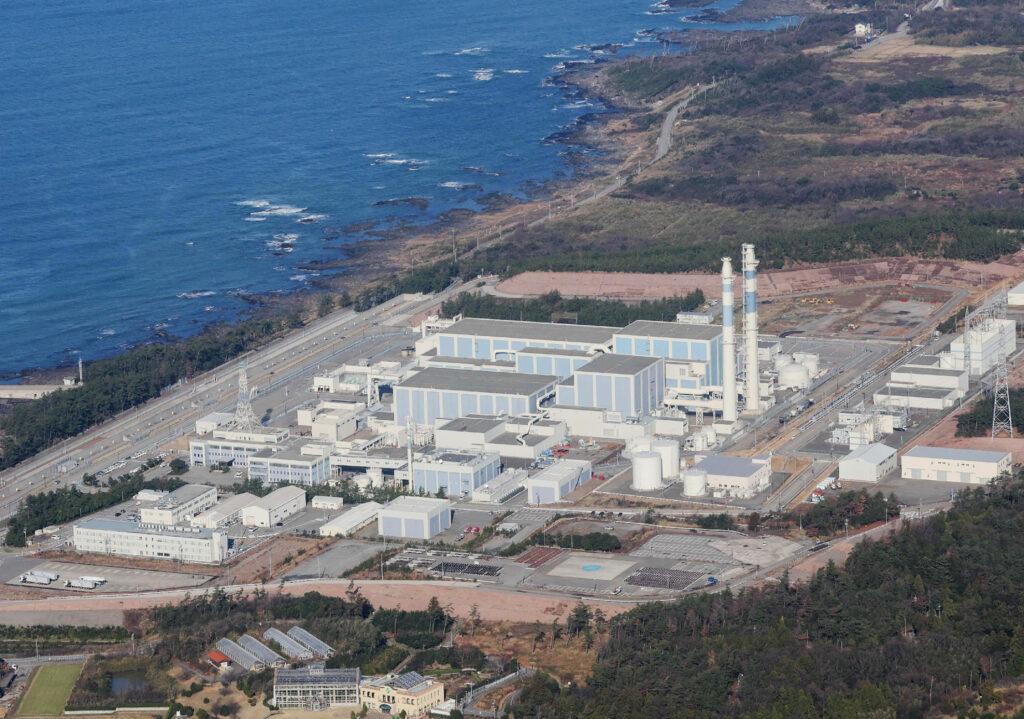
- ARAB NEWS
- 13 Jul 2025

Shika: Japan’s Nuclear Regulation Authority has decided to review its guidelines for evacuation in the event of nuclear emergencies, after the Jan. 1 earthquake that mainly struck the Noto Peninsula in central Japan heavily damaged roads around the Shika nuclear power station set to be used by local residents during evacuation.
The 7.6-magnitude quake also damaged many buildings, leaving some areas inaccessible for more than a week.
“Maybe we will be abandoned if something happens,” said a local staying at an evacuation center in the Fukura Port district in the Ishikawa Prefecture town of Shika, located on the peninsula. The shelter is about 1 kilometer to the north of the nuclear plant in the town.
Ryoichi Nozaki, the 66-year-old head of the district, said that he did not have to worry much about the plant as it was offline at the time of the temblor, but noted that he did not receive any information about the situation at the nuclear facility in the aftermath of the quake.
Under evacuation plans, residents of the district are set to flee to the neighboring Ishikawa town of Noto, northeast of Shika, in the event of a serious accident at the Shika plant. But this would have meant that evacuees moved closer to the epicenter of the Jan. 1 quake.
“I question the practicability of evacuating to a place with serious damage,” Nozaki said. “(Evacuation plans) should be fundamentally revised.”
According to the NRA’s nuclear disaster response guidelines, which stipulate how residents should be evacuated when a serious accident occurs, people within 5 kilometers of a plant will be given priority in evacuation. Those within 5 to 30 kilometers will initially be instructed to stay indoors at home or evacuation centers and then to evacuate in stages depending on the situation.
According to the Cabinet Office, 435 people in eight districts in the town of Anamizu and the city of Wajima remained isolated even a week after the earthquake. Residents of the two Ishikawa municipalities would be instructed to stay indoors in the event of an emergency at the Shika plant.
Of the 11 national or prefectural roads in Ishikawa that would be used as evacuation routes from the districts, seven suffered cracks or collapses.
National Route 249, which gives access to Wajima from Shika, and the Noto-Satoyama Kaido expressway, which leads to the prefectural capital of Kanazawa, remain partially closed despite a month having passed since the quake.
The NRA decided last month to revise its disaster guidelines, mainly re-examining matters related to shelter-in-place orders. The nuclear watchdog will consider criteria for determining the duration of such orders and the timing of lifting them.
An NRA official said that the Noto Peninsula quake “highlighted the question of whether people will be able to shelter indoors,” after about 27,000 residential buildings were damaged in nine municipalities within a 30-kilometer radius of the Shika plant, as well as “how to deal with isolated areas.”
NRA Chairman Shinsuke Yamanaka said that the government-affiliated agency plans to begin discussions on the revision in mid-February, stressing the need for “coordination between measures for general disasters and those for nuclear disasters.”
JIJI Press